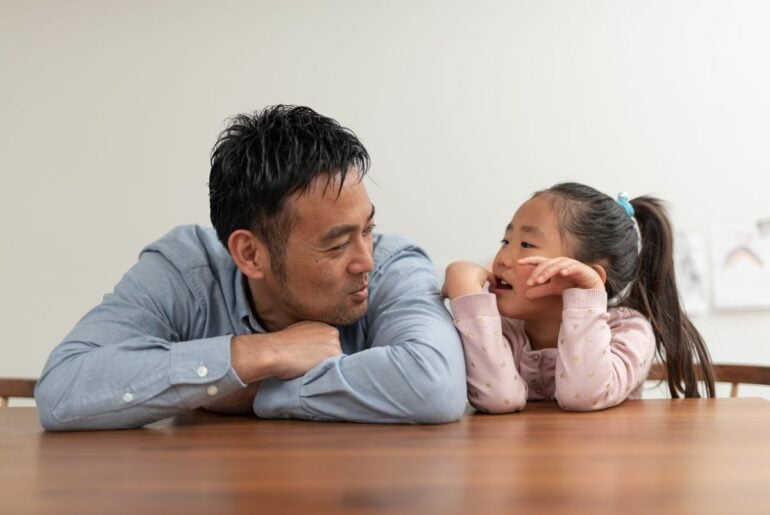Sooner or later, nearly every parent will be faced with the age-old question, “Where do babies come from?” Kids are naturally curious, and as they get older and start to notice things like pregnancies in the family, or other kids talking about sex and reproduction, they might start to ask some questions.
Stick to the facts
No matter your child’s age, it’s important to tell them the truth about reproduction and sex. Without sharing more than they need to know, be sure to use the correct terms for reproductive organs and avoid any myths or fairy tales about where babies come from (like that notorious stork).
Being open and honest with them now will help build a foundation of trust that will come in handy if they ever need to come to you for help in the future. Furthermore, the American Academy of Pediatrics cautions that using slang or made-up words for body parts can give kids the impression that they’re shameful or not OK to talk about, and leave them more vulnerable to sexual abusers.
Use inclusive language
New babies join their families in lots of different ways, including surrogacy, adoption, and in vitro fertilization. Some babies have a single parent, two dads, two moms, or gender nonconforming parents — and some birth parents are trans or nonbinary. It’s important to be inclusive of all types of families when explaining reproduction to your kids.
Explaining reproduction to young kids
With younger kids, start by giving them some positive reinforcement to encourage them to keep coming to you when they have questions. Then, let them lead the conversation and share what they already think they know, and what questions they have.
“That is such a great question, I’m so glad you asked! Where do YOU think babies come from? What would you like to learn about it?”
Be sure to correct any misunderstandings or inaccurate information they share with you, but only give them the most basic information they need to know.
“Some people have something called a uterus inside their bodies where a baby grows. That’s why pregnant peoples’ tummies grow until the baby comes. When the baby is big enough, it comes out through the vagina or a small cut in the tummy made by a doctor.”
If they want to know more about how the baby got there, you can respond with more basic biological facts.
“Some people have tiny cells in their bodies called sperm, and other people have tiny eggs in their bodies. When a sperm and an egg combine, they can make a baby.”
If you get stumped by one of their questions, or are concerned about sharing too much information before they’re ready, you can always let them know you’ll find out the answer and come back to them later. Make sure to follow up in order to continue building trust in your relationship.
Explaining reproduction to older kids
Older kids can handle a little more information about how sex and reproduction are related. Again, stick with only the basic, biological facts and let them lead the conversation by sharing first what they already know and what they would like to know.
“People with penises usually have sperm, and people with vaginas usually have eggs and a uterus. Often, two people make a baby when the sperm comes out of the penis and goes into the vagina where it meets the egg. Sometimes, doctors can use special medicines and tools to help the sperm meet the egg outside of the body before being put into the uterus to grow.”
If they continue to question you about the mechanics of reproduction, you can give them a basic explanation of sex and how it creates a baby.
“When the penis goes into the vagina, it’s called having sex. That’s how the sperm gets into the vagina in order to meet the egg.”
Use books to continue the conversation
Kids are naturally curious about sex and reproduction, so these explanations may bring up even more questions for them. If you feel like you’ve explained all you can without oversharing, reading books on the topic together can be a good way to give them some age-appropriate supplemental information.
The following books are good resources to help kids understand reproduction:
- Before You Were Born, by Jennifer Davis and Laura Cornell (ages 2-3)
- What to Expect When Mommy’s Having a Baby, by Heidi Murkoff and Laura Rader (ages 2-5)
- What Makes a Baby, by Cory Silverberg and Fiona Smyth (ages 3-7)
- It’s Not the Stork!, by Robbie Harris and Michael Emberley (ages 4-8)
- It’s So Amazing!, by Robie Harris and Michael Emberley (ages 7+)
- Sex Is a Funny Word, by Cory Silverberg and Fiona Smyth (ages 7+)







